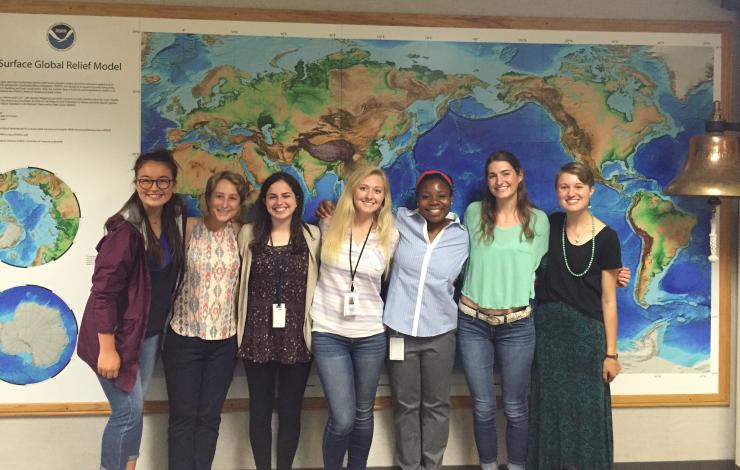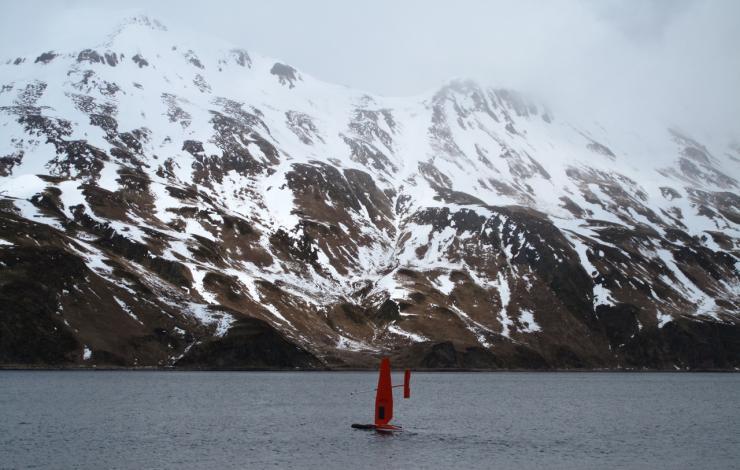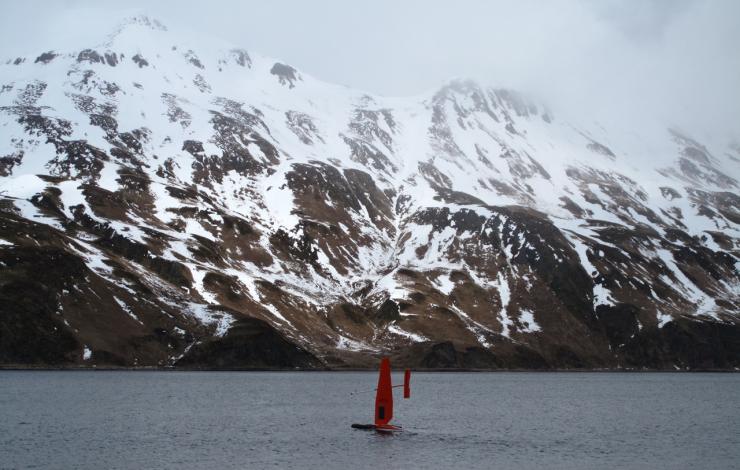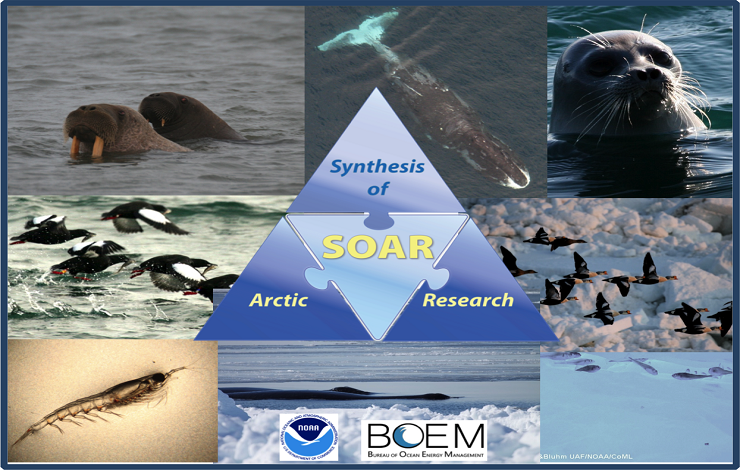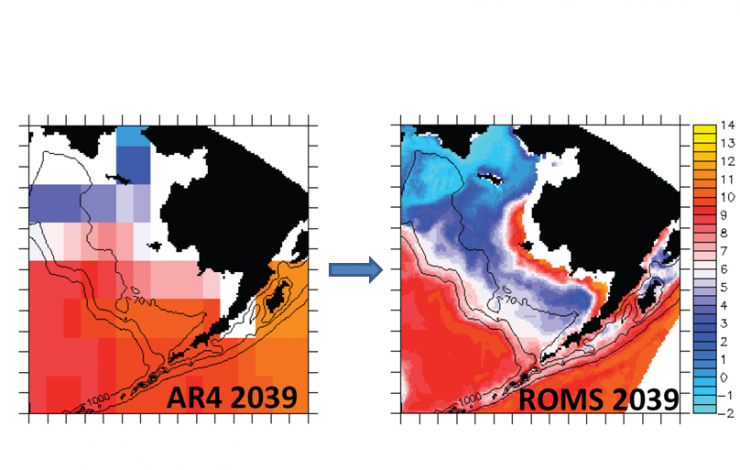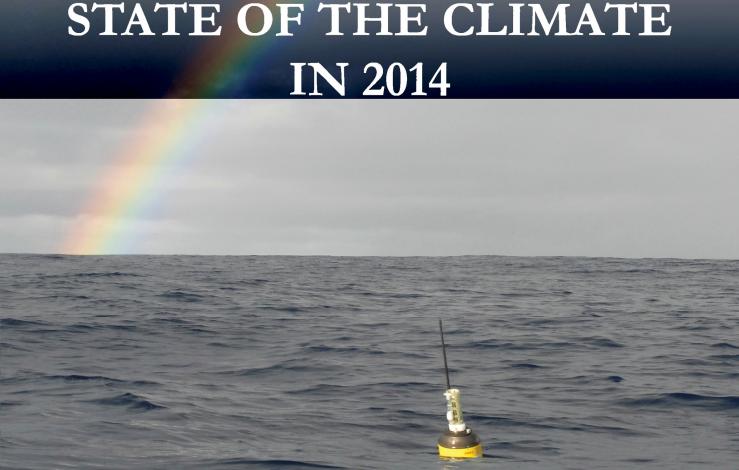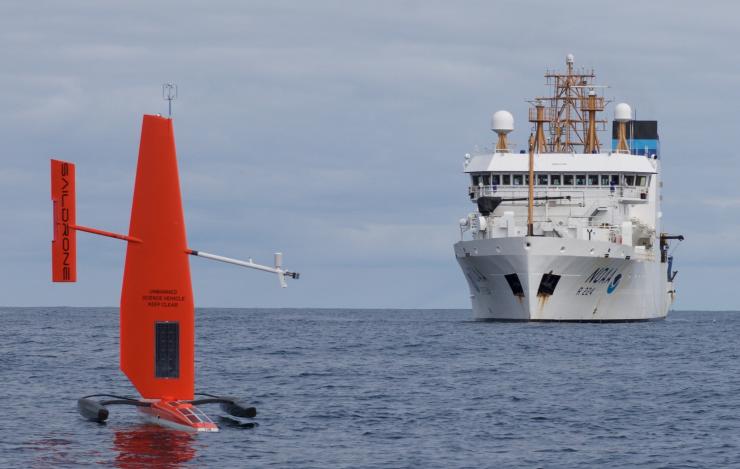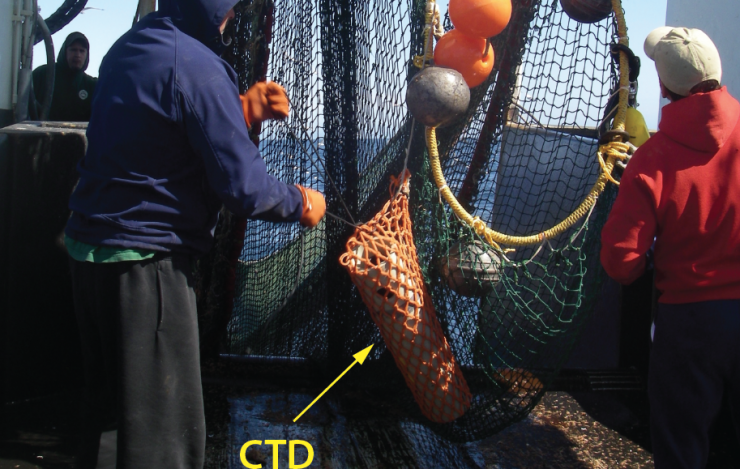What's Happening Archive
This summer, NOAA’s Pacific Marine Environmental Lab is mentoring six undergraduate Hollings scholars and one NSF research experience for undergraduates (REU) student. These students come from all over the United States and all have a passion for the marine environment. The summer internships provide each student with hands-on research experience as they work closely with a mentor. This year, the undergraduates are placed in the Acoustics, Arctic, Carbon, Ocean Climate Stations, Atmospheric Chemistry and Large Scale Ocean Physics groups and are located in Seattle, WA and Newport, OR.
We are very excited to have this year’s cohort: Abigail Birnbaum, Leah Chomiak, Allison Hogikyan, Gabriella Kalbach, Cordelia Sanborn-Marsh, Meghan Shea, and Audrey Taylor. Read more about each Hollings Scholar and our NSF-REU student on our education page.
Learn more about NOAA’s Ernest F. Hollings (Hollings) Undergraduate Program and the National Science Foundation Research Experience for Undergraduate (NSF-REU) program.
We launched! Join the adventure!
Be part of the team and experience what it is like to send a new method of research through some of the harshest seas on the planet to understand the ocean environment in a new and exciting way.
Follow along with the saildrone on the Innovative Technology for Arctic Exploration site.
Watch the YouTube broadcast to hear more from the scientists involved. Read more about the mission here and at NOAA Research.
Through September, PMEL and Alaska Fisheries Science Center (AFSC) are testing innovative technologies to survey the Bering Sea. PMEL is once again utilizing the Saildrone, a solar and wind powered unmanned autonomous vehicle developed by Saildrone Inc., as a research platform. Two Saildrones launched from Dutch Harbor, AK on May 23, each equipped with suites of meteorological and oceanographic sensors, plus specially developed echo sounders and modified whale acoustic hydrophones.
Following the successful 2015 oceanographic field trials, the 2016 mission combines both physical and biological oceanography to seek out new ways to supplement traditional vessel-based research. Oceanographic and fisheries data will be validated to the NOAA Ship Oscar Dyson and PMEL moorings.
Watch the YouTube Broadcast to hear more from the scientists involved. Read more about the mission here and at NOAA Research.
Follow along with the saildrone on the Innovative Technology for Arctic Exploration site.
The NOAA Ship Oscar Dyson headed from Dutch Harbor, Alaska into the Bering Sea on May 3-14. Scientists conducted zooplankton and hydrographic sampling including the Unimak grid and the 70-meter isobaths line. Additionally they recovered two moorings that over-wintered, and deployed two moorings at our long-term M2 site (1 surface and 1 subsurface), and one mooring at station M3, along the "Dog Leg Line" near Umnak Island. Additionally drifters were deployed, and a test of the new "Acrobat Towed Vehicle" was successfully conducted during the southward transit following the 70-m line.
The 2nd deployment of our new-technology Saildrone will take place in July, in coordination with a Chukchi Sea cruise on the USCGC Healy. The first use in 2015 proved the usefulness of this innovative data-collection platform, and returned ocean and met data in real time. This year we will gather some of the same data types, having honed the technology and the return. Additionally we will collect two new data types that will be stored and examined after the unit has returned.
The Synthesis of Arctic Research (SOAR) project published an update on May 9, 2016 that highlights how the Pacific Arctic’s new normal conditions are affecting a variety of marine life. SOAR is 6-year interdisciplinary effort led by PMEL and Fisheries scientists that provides a synthetic view of recent changes in the Pacific Arctic marine ecosystem. These recent changes include longer open-water periods during the summer, fewer days of sea ice cover, reduced sea ice thickness, increased growing season of marine algae and lower pH. A second Special Issue is currently underway and builds on themes and new understanding described in the first Special Issue that featured 17 papers from over 100 contributors.
Through collaboration and synthesis, SOAR is increasing scientific understanding of the complex relationships among oceanographic conditions (physics, chemistry, sea ice), and species in various levels of the food web (from zooplankton and forage fish to seabirds and marine mammals), in the rapidly changing Pacific Arctic marine ecosystem.
Read the project update on Eos, the news arm of the American Geophysical Union.
Al Hermann and Wei Cheng, PMEL/JISAO researchers with EcoFOCI are part of a new NOAA-funded study to project large-scale environmental changes in the US Arctic through the process of dynamical downscaling. This process uses the most recent set of global climate models (CMIP5) to simulate regional events in the Bering Sea. Paired with upper trophic level and management models, the project will provide a variety of projections of the Bering Sea ecosystem with varying fishing and climate scenarios.
The CLIMate project seeks to understand how large-scale changes in the atmosphere and oceans will manifest themselves in the Bering Sea, how such environmental changes will affect commercially important fish and other species, and how management strategies could be beneficially modified in the face of anticipated changes in mean conditions, variability, and the likelihood of extreme events.
For more information, please see news releases by NOAA Fisheries and the University of Washington and find more data products at the Alaska Ocean Observing System.
The State of the Climate in 2014 report, published in July 2015 as a Bulletin of the American Meteorological Society supplement, highlights records in sea level, ocean heat content, and sea surface temperature, also documenting ocean climate variability including the borderline El Niño, the warm-water “Blob” in the Northeast Pacific, and a transition to the warm phase of the Pacific Decadal Oscillation. The cover features a PMEL Argo float, deployed in September 2007 and still active in July 2015. PMEL scientist Gregory Johnson co-edited the Global Oceans chapter of the report, composing haiku to summarize 2014 ocean variations:
Not quite El Niño, | North Oceans’ fluxes, warmth shift, | dance with weird weather.
and longer-term changes:
Seas warm, ice caps melt, | waters rise, sour, rains shift salt, | unceasing, worldwide.
Several PMEL, JISAO, and JIMAR scientists are section authors.
In April, PMEL and JISAO scientists and engineers teamed up with Saildrone, Inc. to test two Saildrones in the harsh environment of the Bering Sea for the first time. The unmanned instruments sailed from Dutch Harbor, AK on April 22. They have traveled over 2,000 miles each since then, taking over 40 million measurements as they sail north following the ice retreat. With the Arctic environment changing rapidly, the success of these vehicles couldn’t come at a better time. The measurements taken across the eastern Bering Sea have the potential to provide a comprehensive picture of the changes that occur in the late spring environment when the ice is retreating.
Read more about this research on the NOAA Research page and the Innovative Technology for Arctic Exploration site.
The North Pacific Research Board’s multi-year Bering Sea Project strives to understand the effects of climate change and dynamic ice cover on the eastern Bering Sea ecosystem. Project Headlines make scientific results available to the general public. A recent PMEL contribution entitled Circulation on the Bering Sea Shelf Revealed by Temperature and Salinity Measurements summarizes research in which PMEL scientists augmented NOAA Alaska Fisheries Science Center bottom trawl surveys with instruments to measure ocean temperature and salinity profiles at over 350 sites in the Bering Sea. From those measurements, scientists inferred the ocean currents in this ecologically and economically rich region during the summers of 2008-2010. Those observations help us to understand the ecosystem, measure its variability, and calibrate predictive computer models that estimate future conditions under different climate scenarios. More Bering Sea Project Headlines are available here.



